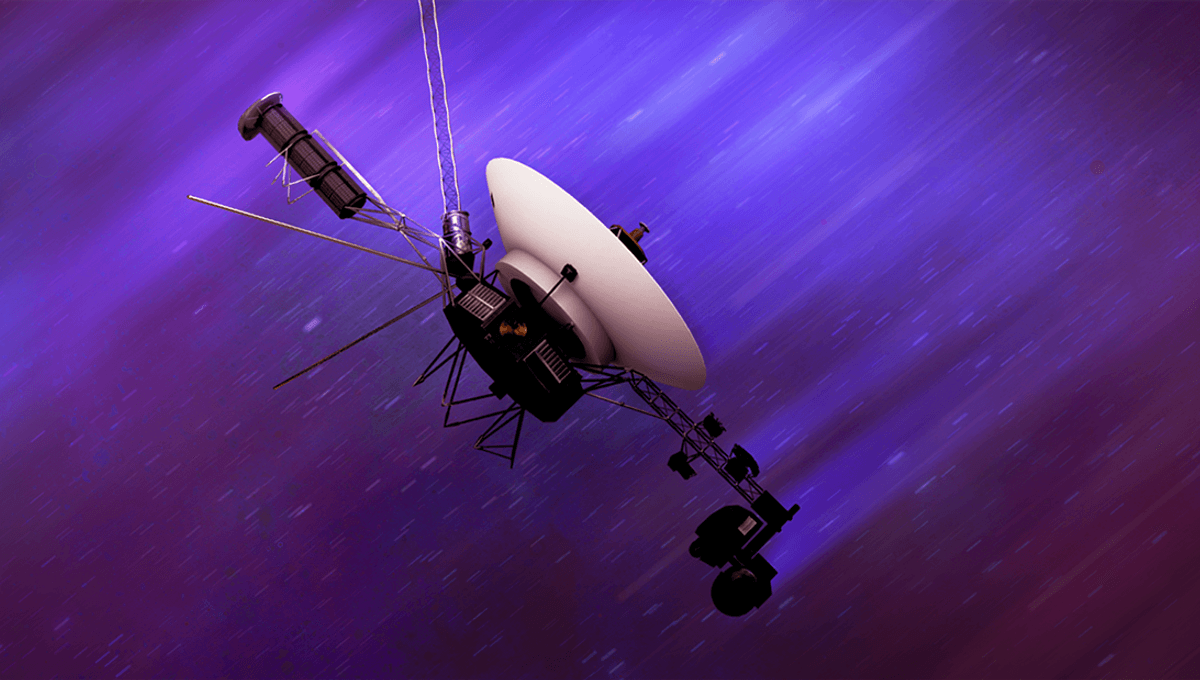-
Noticias Feed
- EXPLORE
-
Páginas
-
Blogs
-
Foros
The Last Time NASA's Voyager "Looked Back" At Our Solar System, This Is What It Saw

The Last Time NASA's Voyager "Looked Back" At Our Solar System, This Is What It Saw
If you're up to date on your Voyager news, you will know that the aging spacecraft are slowly saying goodbye to their instruments, as NASA tries to conserve power and get more science data out of the remaining payloads.
In the latest shutdown, the cosmic ray subsystem experiment on Voyager 1 and Voyager 2’s low-energy charged particle instruments were taken offline in March. One especially power-hungry instrument – the cameras on board both spacecraft, used to send home gorgeous images of the planets – was shut down long before that. In 1989, Voyager 2 – fresh from taking the first-ever close-up observations and photos of ice giant Neptune – shut off its wide and narrow-angle cameras as NASA engineers wanted to use that power and computer memory for instruments to collect data on the solar wind and interstellar space. Neptune's largest moon – Triton – imaged by Voyager 2. Image credit: NASA/JPL/USGS Voyager 1 retained its cameras for a little longer, taking its last photographs on February 14, 1990, before power requirements elsewhere forced NASA to turn its cameras off too. For its final images, at around 6 billion kilometers (4 billion miles) from the Sun, the probe pointed its cameras back in our direction and took a "Solar System Family Portrait". "It is the only series of images that captures Venus, Earth, Jupiter, Saturn, Uranus and Neptune arrayed about the sun," NASA explains of the portrait, adding, "the spacecraft will never fly close enough to any astronomical object to take images again." Family portrait of the Solar System, captured by Voyager 1. Image credit: NASA/JPL-Caltech Family portrait of the solar system, with close-ups. Image credit: NASA/JPL-Caltech A few planets are missing from the portrait, a composite of 60 images stitched together. Mercury was simply too close to the Sun to be imaged, and Pluto (then defined as a planet) was too far from Voyager. Mars, unfortunately, was obscured by scattered sunlight bouncing within the camera. But the showstopper – the image of Earth – became iconic, and came to be known by the name "Pale Blue Dot". The Pale Blue Dot where we all live. Image credit: NASA/JPL-Caltech “That’s here. That’s home. That’s us. On it everyone you love, everyone you know, everyone you ever heard of, every human being who ever was, lived out their lives… on a mote of dust suspended in a sunbeam," American astronomer and planetary scientist Carl Sagan wrote of the image in his book Pale Blue Dot: A Vision of the Human Future in Space. “There is perhaps no better demonstration of the folly of human conceits than this distant image of our tiny world,” he added. “To me, it underscores our responsibility to deal more kindly with one another, and to preserve and cherish the pale blue dot, the only home we've ever known.” It was a pretty spectacular final portrait of the Solar System, and has not been replicated. "Only three spacecraft have been capable of making such an observation from such a distance: Voyager 1, Voyager 2 and New Horizons," NASA adds. "It remains the first and only time — so far — a spacecraft has attempted to photograph our home solar system." So, could NASA turn the cameras back on if they needed to, and capture more images of our home system? Probably not at this point. "Mission managers removed the software from both spacecraft that controls the camera. The computers on the ground that understand the software and analyze the images do not exist anymore," NASA explains. "The cameras and their heaters have also been exposed for years to the very cold conditions at the deep reaches of our solar system. Even if mission managers recreated the computers on the ground, reloaded the software onto the spacecraft and were able to turn the cameras back on, it is not clear that they would work." But on the plus side, at least we are still receiving regular science data from these incredible spacecraft, the first to detect the 30,000-50,000 kelvin (54,000-90,000 degrees Fahrenheit) wall at the edge of our Solar System.





